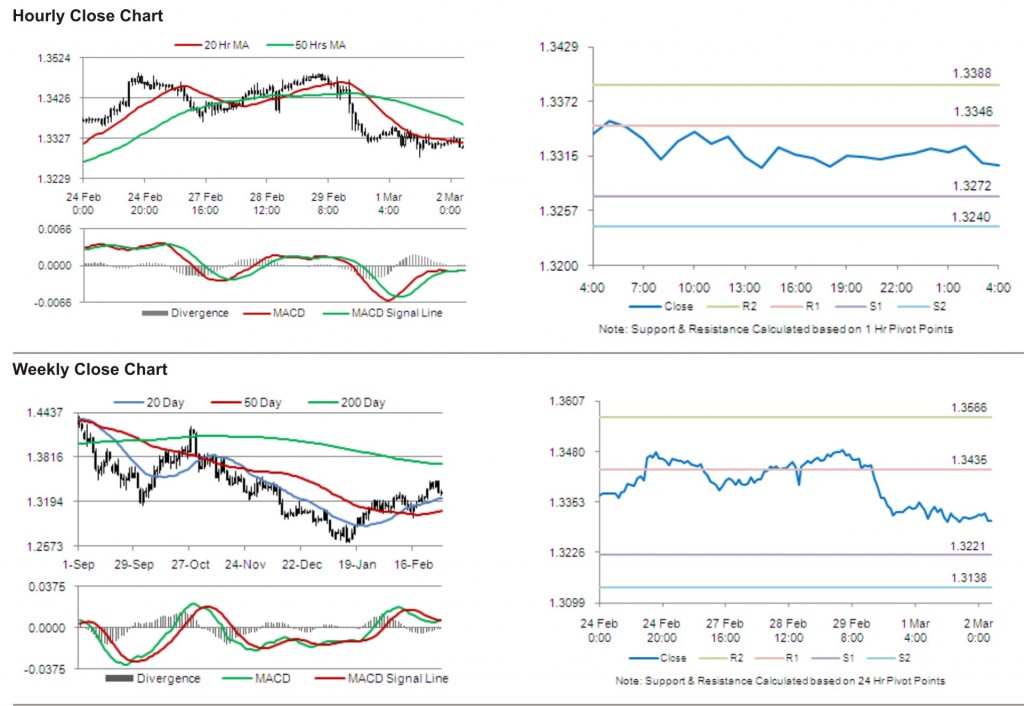For the 24 hours to 23:00 GMT, EUR declined 0.08% against the USD and closed at 1.3318, after unemployment rate in the Euro-zone climbed to the highest level in 14-years to 10.7% in January, while another report showed that the region’s manufacturing activity contracted for the seventh consecutive month in February.
EUR received a boost during the day, after the International Swaps and Derivatives Association (ISDA) stated that the restructuring of Greek government bonds would not trigger credit default swaps.
Moreover, Euro-zone bond auctions saw good demand yesterday, with lower yields. France sold €7.99 billion ($10.7 billion) of bonds, with borrowing costs declining. Also, Spain sold €4.5 billion of bonds maturing in 2014, 2015 and 2016, meeting its maximum target for the auction.
Separately, European leaders, in the summit yesterday, agreed to provide capital faster for the planned permanent bailout fund to Greece to strengthen the bloc’s defenses against the debt crisis.
In economic news, German manufacturing Purchasing Mangers’ Index (PMI) stood at 50.2 in February, up from the initial estimate of 50.1. In France, the manufacturing PMI stood at of 50.0 in February, below the preliminary estimates of 50.2.
In Euro-zone, the manufacturing PMI rose to 49.0 in February, compared to 48.8 in January. Additionally, the Consumer Price Index in the Euro-zone rose 2.7% (YoY) in February, compared to a 2.6% rise in the previous month.
In the Asian session, at GMT0400, the pair is trading at 1.3304, with the EUR trading 0.10% lower from yesterday’s close.
The pair is expected to find support at 1.3272, and a fall through could take it to the next support level of 1.3240. The pair is expected to find its first resistance at 1.3346, and a rise through could take it to the next resistance level of 1.3388.
Trading trends in the pair today are expected to be determined by Producer Price Index (PPI) in Euro-zone.
The currency pair is trading below its 20 Hr and 50 Hr moving averages.

